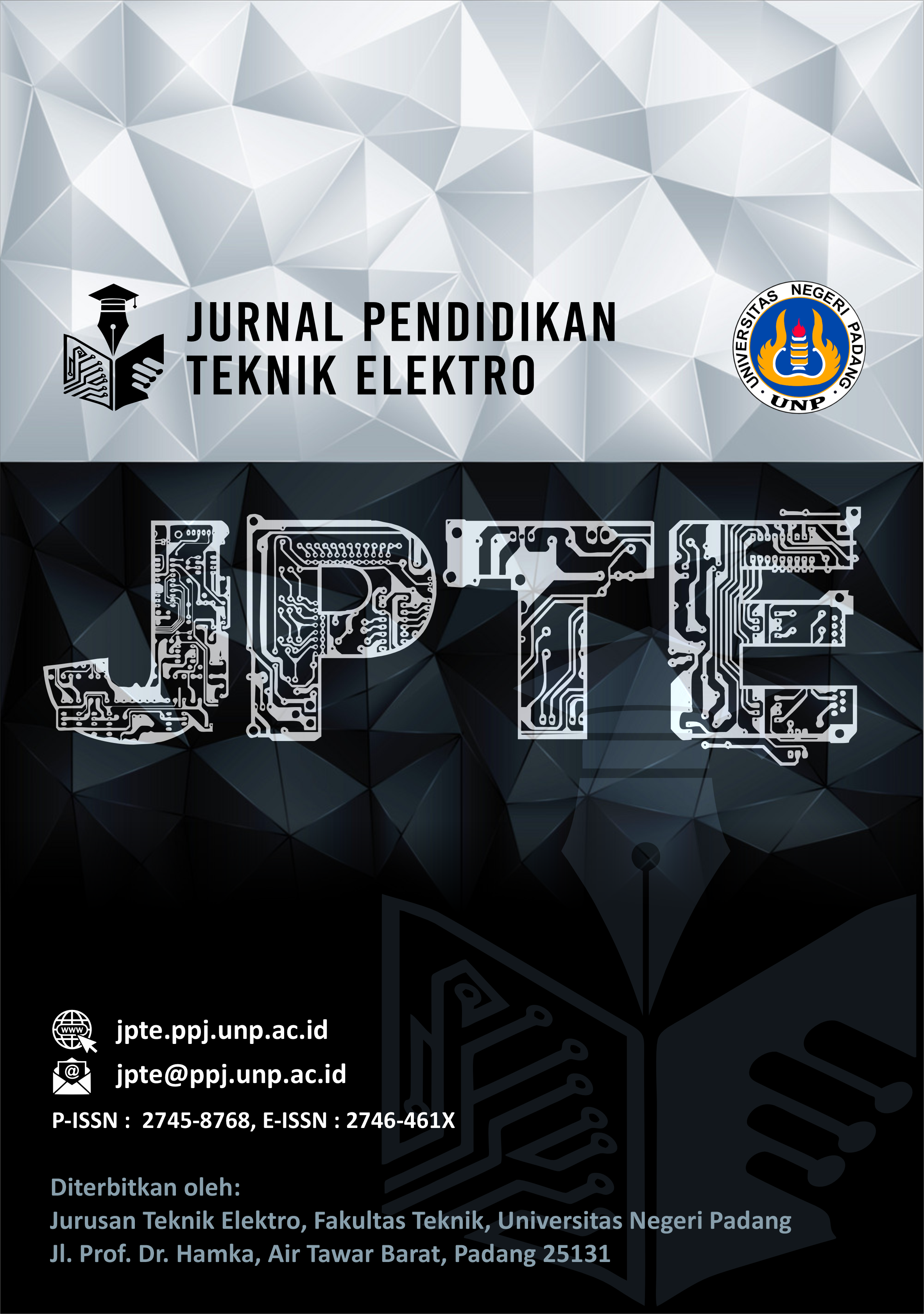Penerapan Kahoot berbasis Games-Based Learning pada Mata Pelajaran Dasar Ketenagalistrikan
##plugins.themes.academic_pro.article.main##
Abstract
This study aims to determine the application of games-based learning assisted by Kahoot in improving student learning outcomes in basic electricity subjects at SMK Muhammadiyah 1 Padang. Conventional learning methods that tend to be monotonous and less interactive are one of the causes of low motivation and student learning outcomes. This study uses an experimental method with a one-group pretest-posttest design. The research instrument is a learning outcome test consisting of a pretest and a posttest. The data analysis techniques used in this study are the N-Gain test, effect size, and completeness of learning outcomes. The results of the study show that the application of games-based learning assisted by Kahoot significantly improves student learning outcomes. The average score of the posttest students increased compared to the pretest, with the results of the N-Gain test showing a moderate improvement category and an effect size in the large category. Student learning completeness was also achieved with a percentage of 86%. Thus, Kahoot is effective in increasing student motivation and learning outcomes in this subject.
##plugins.themes.academic_pro.article.details##

This work is licensed under a Creative Commons Attribution 4.0 International License.
References
[2] B. Armedianto Putro, J. Dedy Irawan, and S. Adi Wibowo, “Kombinasi Metode Finite State Machine Dan Fuzzy Pada Game Escape From Punk Hazard,” JATI (Jurnal Mhs. Tek. Inform., vol. 5, no. 1, pp. 71–78, 2021, doi: 10.36040/jati.v5i1.3276.
[3] P. Bawa, “Using Kahoot to Inspire,” J. Educ. Technol. Syst., vol. 47, no. 3, pp. 373–390, 2019, doi: 10.1177/0047239518804173.
[4] D. H. Iwamoto, J. Hargis, E. J. Taitano, and K. Vuong, “Analyzing the efficacy of the testing effect using KahootTM on student performance,” Turkish Online J. Distance Educ., vol. 18, no. 2, pp. 80–93, 2017, doi: 10.17718/tojde.306561.
[5] R. Adolph, 済無No Title No Title No Title. 2016.
[6] Nuryadi, T. D. Astuti, E. S. Utami, and M. Budiantara, Buku Ajar Dasar-dasar Statistik Penelitian. 2017.
[7] W. Sulistiyawati, R. Sholikhin, D. S. N. Afifah, and T. Listiawan, “Peranan Game Edukasi Kahoot! dalam Menunjang Pembelajaran Matematika,” Wahana Mat. dan Sains J. Mat. Sains, dan Pembelajarannya, vol. 15, no. 1, pp. 46–57, 2021, [Online]. Available: https://ejournal.undiksha.ac.id/index.php/JPM/article/view/29851
[8] A. I. Wang and R. Tahir, “The effect of using Kahoot! for learning – A literature review,” Comput. Educ., vol. 149, no. January, 2020, doi: 10.1016/j.compedu.2020.103818.
[9] M. S. Paysa and A. F. Hayati, “Pengaruh Penggunaan Media Evaluasi Kahoot terhadap Hasil Belajar Siswa (Studi Kasus pada Siswa Kelas X SMA Negeri 2 Padang),” J. Pendidik. Tambusai, vol. 7, no. 2, pp. 9215–9223, 2023, [Online]. Available: https://www.jptam.org/index.php/jptam/article/view/7717
[10] J. Publikasi et al., “Efektivitas Game Based Learning Berbantuan Kahoot Dalam Meningkatkan Minat dan Hasil Belajar Siswa Kelas X TITL SMKS Raden Paku Rata-rata nilai Sumatif Tengah Semester ( STS ) kelas X TITL SMKS Raden Paku pendekatan khas yang digunakan di dalam kelas . Pa,” vol. 2, no. 4, pp. 76–86, 2024.
[11] I. Irwan, Z. F. Luthfi, and A. Waldi, “Efektifitas Penggunaan Kahoot! untuk Meningkatkan Hasil Belajar Siswa,” Pedagog. J. Pendidik., vol. 8, no. 1, pp. 95–104, 2019, doi: 10.21070/pedagogia.v8i1.1866.
[12] A. F. Khomsah and M. Imron, “Pembelajaran Bahasa Arab melalui Kolaborasi Metode Questioning dan Media Kahoot,” Tarbiyatuna J. Pendidik. Ilm., vol. 5, no. 1, pp. 99–118, 2020, doi: 10.55187/tarjpi.v5i1.3867.
[13] M. H. Wahyudi, Suarman, and Gimin, “Penggunaan Kahoot untuk meningkatkan minat belajar siswa sekolah menengah pertama pada pelajaran ilmu pengetahuan sosial,” J. Ilmu Sos. dan Humaniora), vol. 2, no. Desember, pp. 179–194, 2023, [Online]. Available: https://journal.ikmedia.id/index.php/jishum
[14] M. A.-A. Ismail and J. A.-M. Mohammad, “Kahoot: A Promising Tool for Formative Assessment in Medical Education,” Educ. Med. J., vol. 9, no. 2, pp. 19–26, 2017, doi: 10.21315/eimj2017.9.2.2.
[15] T. L. Lai, F. T. Lin, and H. P. Yueh, “The effectiveness of team-based flipped learning on a vocational high school economics classroom,” Interact. Learn. Environ., vol. 28, no. 1, pp. 130–141, 2020, doi: 10.1080/10494820.2018.1528284.

